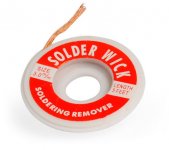FredC
Diamond
- Joined
- Oct 29, 2010
- Location
- Dewees Texas
Did a hard drive replacement for a fellow machinist who uses a desktop to drive a small CNC mill. One of the IDE ports was bad made me think I did not hold my mouth right and did the static thing to it. After I got the replacement hard drive in and seemingly everything working i decided to look the mother board over and Yikes! more than half of the eletrolytics are swollen and leaking. Can you still get older style motherboards with 500 mhz processors?
I thought I would be smart 20 years ago bought a couple of brand new boards and processors. They are still in the boxes and I checked them this morning and both have several swollen caps also. If you can not get new boards in this class with IDE hard drive capable is there someone reliable that can replace these caps?
I am spooked now and will be checking all the machines for this condition.
I thought I would be smart 20 years ago bought a couple of brand new boards and processors. They are still in the boxes and I checked them this morning and both have several swollen caps also. If you can not get new boards in this class with IDE hard drive capable is there someone reliable that can replace these caps?
I am spooked now and will be checking all the machines for this condition.



